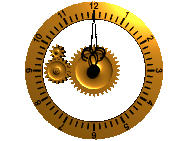




I enjoy teaching and mentoring students, from freshman-level service courses to more advanced graduate courses. I learn from teaching as much as my students learn from my courses. Teaching forces me to present non-trivial problems in a pedagogical way, and offers me a new point-of-view on these problems. Sometimes the questions that the students ask give me answers to my own questions. Sometimes, students propose an alternate way to solve a given problem, which can be simpler than the solution I found. I believe that teaching is a symbiosis between the teacher and the students.
In France, where I got all my college degrees, there exists a degree called DEA that has no equivalent in the USA. Getting this degree is mandatory for being allowed to start a doctorate. When I obtained my DEA degree, my ranking entitled me to two awards:
My teaching activities started at the beginning of my doctorate.
I spend a lot of personal time in preparing my courses, in order to make sure that the students can easily understand all the covered topics. I often create 3D animations using ray-tracing techniques in order to illustrate a given situation. For example, I created a video in order to illustrate how superfluidity is experimentally detected and how a thought experiment can be designed in order to derive a formula for calculating the superfluid density. My video was selected to appear in the video gallery of the APS March Meeting 2015, where I was invited to give a talk on the subject. The video is directly accessible here:
I like to challenge the students to think like real Physicists. Indeed, many problems found in the literature are often solved by self-consistency, starting from the known solution and showing that “it works”. But I think this is not a good way to learn, because a real Physicist who is facing a new problem does not know the solution in advance. He or she has to investigate the problem in order to find the solution. So I like to present problems as they appeared to people who solved them for the first time, in order to train the students to elaborate their own discovery of the solution.
It is also important to draw connections with the historical framework in which the physical concepts were developed. New ideas were not always accepted by the scientific community, but they imposed themselves by the facts: They reconciled the theory with the observation.
Physics is fun, and so is Math. If we can convince the students that this is true, then they learn better. This is why I always try to make
connections between the topics of my courses and our everyday life, with direct examples of application. For example, in order to illustrate
my “electronics” course, I designed and built a 16-band audio spectrum analyzer (see the full project here). My students were able to fully understand how it works and
build their own. The video below shows a test of this spectrum analyzer:
In order to illustrate group theory and non-commutative algebra, I took the example of the Rubik's cube. I explained the students how commutators can be used in order to derive formulas that allow one to solve the six faces of the cube, and composed a homework assignment in which the students are guided step-by-step through the final solution starting from a randomly shuffled cube. No need to mention that the students were very excited about this. I also made a series of videos to explain the method:
I have always been actively involved in mentoring students since the beginning of my postdoctoral activities. I discussed with the students about physics problems, computer codes, and helped them to publish their scientific results. Among them:
Not sure you want to subscribe? Take a peek at the description of the Blue Moonshine channel to get an idea of its contents.